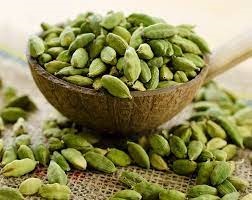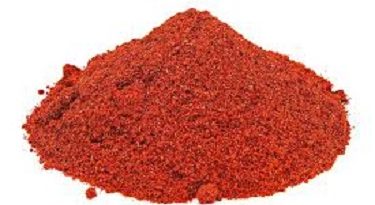Cardamom Benefits ~ Everything You Need to Know
Cardamom Benefits ~ Everything You Need to Know. Please watch >>>>>
Benefits and Side Effects of Cardamom?

Further research is needed; however, cardamom may be beneficial for conditions like infection, high blood pressure, and weight loss.
While adding it to food, make sure to consult your physician before using any cardamom extracts or supplements.
Possible Benefits of Cardamom: It’s an antioxidant.
- Antidiabetic
- Antimutagenic
- Antibacterial
- Heart protective.
- Liver protective
- Anti-inflammatory.
- Chemoprotective (an agent that may reduce the side effects of chemotherapy)
Benefits of Cardamom for Skin and Hair
Clear Skin – Cardamom is a skin-saving remedy for acne-prone skin. It removes imperfections and stops outbreaks.
It unclogs all clogged pores and regulates sebum flow. Its anti-inflammatory components help to soothe and balance out skin inflammation.
Softer Lips – Cardamom’s antioxidant content makes chapped lips less of an issue. Lip balms contain cardamom essential oils to soothe the lips and give aroma.
Overview ~ Everything You Need to Know about Cardamom
In the same plant family as ginger, cardamom is an aromatic spice derived from the seed pods of Elettaria cardamomum.
This perennial herb is indigenous to Bangladesh, Pakistan, and Indonesia, among other countries of Asia. It belongs to the Zingiberaceae family of plants, which also contains ginger, and has white blossoms.1.
Dried seeds from this plant are frequently used as a spice in Asian baked goods, curries, and coffee.
For thousands of years, people have utilized various parts of the cardamom plant, such as the seeds, leaves, bark, roots, and flowers, due to its possible health advantages.
Cardamom has been demonstrated to have anti-inflammatory, antihypertensive, blood sugar-lowering, cholesterol-lowering, and antioxidant properties in preliminary tests.
However, there aren’t many clinical studies demonstrating these and other health advantages.
Benefits of cardamom for nutrition
In addition to a few vitamins and minerals, cardamom also has some fiber. It has a very low calorie and carbohydrate content.
The following nutrients are found in one tablespoon of ground cardamom, according to the Department of Agriculture:
- Calories: 18
- Total fat: 0.4 grams (g)
- Carbohydrates: 4.0 g
- Protein: 0.6 g
- Fiber: 1.6 g
It also contains the following quantities of vitamins and minerals:
- Potassium: 64.9 milligrams (mg)
- Magnesium: 13.3 mg
- Phosphorus: 10.3 mg
- Calcium: 22.2 mg
- Iron: 0.81 mg
What does cardamom taste like?
The flavor of green cardamom is highly spicy, minty, and sweet. Rich in fragrance, the seeds and the pod are frequently used in sweets, spicy and hot foods, and aromatic drinks like tea and coffee.
After saffron and vanilla, it is the third most expensive spice and is known as the “queen of spices.”
What is Cardamom Used for?
There are numerous ways to consume cardamom, including powder, capsules, essential oil, and supplements.
Indian cooking uses it as a flavorful spice. The seeds are used to enhance the flavor of pastries, baked products, meatloaves, and beverages in addition to hot and spicy foods. It’s frequently added to coffee in the Middle East,
Healthy Ways to Add Cardamom (Elaichi) to Your Diet
There are several delicious and nutritious cardamom dishes that are also packed with other beneficial ingredients. Let’s explore the various applications of cardamom in cookery.
#1 Banana Cardamom Smoothie
Ingredients:
- ¼ teaspoon ground cardamom
- 1 large frozen banana
- 1 cup plain Greek yogurt
- 1-inch piece fresh ginger, peeled
- ¼ cup Almond milk
- 2 pitted dates
- 1 pinch salt
Method
Puree on high until completely smooth. Then, pour into glasses and serve chilled.
Here are some more cardamom-infused recipes you may make at home.
The following recipes include:
- Turmeric Cardamom Cinnamon Tea
- Homemade Chai Tea Latte Recipe
- Amazing Thai Tea Recipe
- Mint Flavored Quinoa
- Sheer Khurma (Milk with Dates)
Although cardamom was first found in India, it may now be found in most tropical Asian countries, such as Guatemala (Central America), Tanzania (Africa), China, Bhutan, Vietnam, Malaysia, Korea, and Japan.
If you are unable to find cardamom near your house, here are 4 Best Cardamom Substitutes for Cooking.
Some options for a cardamom substitute include:
- Ground cinnamon and ground cloves.
- Ground coriander and ground nutmeg.
- Mace powder
- Ground ginger and ground nutmeg.
- Ground allspice.
Benefits and side effects of cardamom
Using cardamom in cooking has no recognized hazards and no negative side effects. For the most part, cardamom can be safely used as a spice and flavoring agent.
The recommended dosage for supplementing with cardamom is not specified. A common dosage for cardamom pills or capsules is 400–500 mg of dried herb per pill. Speak with a healthcare provider before using cardamom supplements or any other natural supplements.

The Bottom Line
Cardamom is safe for most people to use in moderation, while many of its health advantages require more research.
The inherent phytochemicals in cardamom contain anti-inflammatory and antioxidant properties that may enhance health. It’s too soon to tell, though, if this spice can help with any medical issues.
Q&As
Cardamom side effects for female
Top 9 Side Effects of Cardamom
- Allergic Reactions.
- Gastrointestinal Disturbances.
- Lower Blood Pressure.
- Dermatitis
- Respiratory Issues
- Interference with Medications.
- Hormonal Effects.
How much cardamom is to be eaten a day
For improved digestion and fresh breath, take two to three green cardamom pods daily.
Consume 250 mg of cardamom powder (churna) or as directed by your physician.
Cardamom uses and benefits
Seven key benefits of cardamom
- It has antibacterial properties
- It could lower blood sugar and inflammation.
- Can promote oral health.
- It may improve liver health.
- It can boost heart health.
- May reduce nausea and vomiting during pregnancy
- It could help fight cancer cells.
Cardamom tea ~ What Is Cardamom Tea?
Cardamom spiced tea is prepared by boiling crushed cardamom seeds in water, sometimes along with tea leaves.
This infusion has a significant therapeutic potential since the seeds release their bioactive components into the water.
Cardamom powder ~ What is cardamom powder used for?
Cardamom is used in many Indian and Indian-inspired recipes, such as curry, tea, and Kheer (Indian rice pudding).
The spice cardamom is also included in Indian spice combinations like garam masala.
Additionally, cardamom gives baked foods like cheesecake, bread pudding, and cookies richness and warmth.
Cardamom side effects for male
Top 9 Side Effects of Cardamom
- Allergic Reactions.
- Gastrointestinal Disturbances.
- Lower Blood Pressure.
- Respiratory Issues.
- Interference with Medications.
- Hormonal Effects.
- Skin Irritation
Taste of cardamom
The tiny pods that encase cardamom seeds are about the size of cranberries.
Cardamom has a warm, spicy, sweet taste with hints of lemon, smoke, and mint. It also has a strong, pungent scent.


